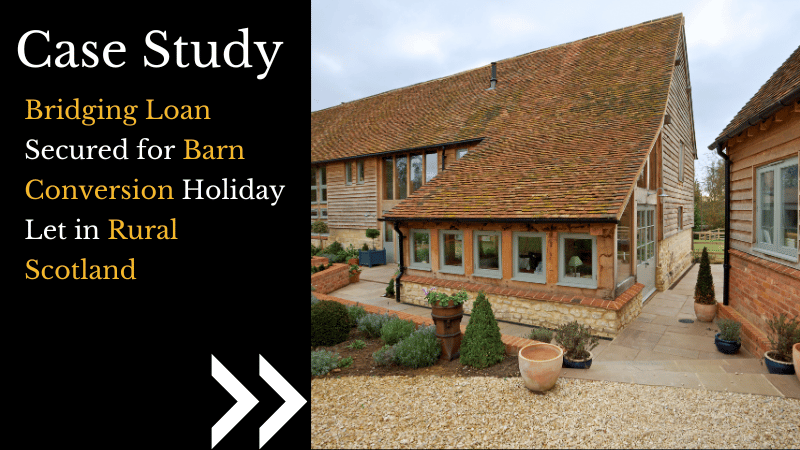Categories
Bridging Loan for Buy to Let: How Investors Use Short-Term Finance to Grow Portfolios

For many property developers and investors, using a bridging loan to renovate a buy-to-let property is an exciting opportunity to boost the market value of the property and maximise the rental yield for the strongest possible return on investment.
Mortgage regulations are typically too strict and slow to finance the best auction bargains. But bridging loans are designed with speed and flexibility in mind, and provide a solution for buy-to-let investors looking to seize opportunities.
At Clifton Private Finance, we’re here to help you navigate the property market with the power of a cash buyer with our in-depth look at how savvy investors use bridging loans to grow buy-to-let portfolios.
Ready to get a quick quote?
Get started with our calculator
The Limitations of a Buy-to-Let Mortgage
BTL mortgages are long-term loans that are designed for landlords with tenants. The tenant lives in the property and pays rent, which is used each month to cover the mortgage, any maintenance and costs, and make a profit.
However, many of the biggest bargains found at auction are properties deemed currently uninhabitable.
From a lender and regulatory perspective, providing a BTL mortgage for a property that isn’t ready to have anyone live in it is counter-productive and high-risk.
BTL mortgages also tend to have complicated underwriting, a period of careful assessment to make sure everything is as it should be, and that the property is properly valued.
The results:
- Rejected applications for properties that are rundown.
- Rejected applications for properties without a working kitchen or bathroom.
- Rejected applications for properties that can’t immediately be moved into.
- Long delays between application and money-in-the-bank.
This means:
- Auction properties are typically out of reach, as a traditional BTL mortgage isn’t going to go through in time to meet the 28 day payment deadline.
- Properties needing renovation can’t get a mortgage secured on them, even if you know you can get the work done smoothly.
- Available bargains have to be ignored by mortgage-reliant landlords.
The answer may lie with bridging finance.
Why Use a Bridging Loan into a Buy-to-Let Mortgage
Bridging finance has been developed to overcome the challenges of a traditional mortgage. This means bridging finance is:
- Fast - The time between application and released funds is typically between seven to ten days. Even quicker in many cases.
- Flexible - Bridging finance doesn’t require the same level of underwriting as a long-term finance option, such as a mortgage.
- Secured against property - This can be an existing property or portfolio, or the new property you are purcashing. The higher the value of the security, the better bridging loan rates you will receive.
- Based on an exit strategy - There are no monthly repayments; instead, the borrowed sum is repaid along with any interest at the end of the term (or sooner).
The basic idea for bridging finance is simple: funds are provided quickly for you to use to buy the property, and once you can get a mortgage, it’s used to repay the bridging finance.
This gives you:
- Money right now, to take advantage of time-sensitive opportunities.
- Time to organise a slower long-term mortgage.
- A flexible repayment window with no early repayment charges - just pay it off as soon as you can to minimise interest.
But bridging finance does more than simply buy the house.
It also gives you the money you need to pay for the renovations. Properly set up, a bridging loan can provide all the power you need to grab that property bargain and fix it up to a profitable standard.

How Much Bridging Finance Can You Get?
There is only one true limitation on the size of bridging finance, and that’s the amount of security you have. A bridging loan for buy-to-let is a secured finance option, just like a mortgage, with your property used as guarantee on the loan.
The typical loan-to-value (LTV) for bridging finance is between 60% and 80%, compared to a typical BTL mortgage of 75% LTV.
However, bridging finance has a huge advantage over a standard BTL mortgage in that security is not limited to the property you are buying. Other properties including your residential home can also be used as additional security.
This gives you the power to both purchase and renovate a new property, ready to maximise its letting potential.
How to Use a Bridging Loan for Buy-to-Let Property: An Example
Simon is looking to obtain his first BTL property.
He has saved £30,000 which he intended to use on a BTL mortgage.
He knew this would limit him to properties at a low value of £120,000, but assumed he could buy one of the many houses he’s seen at auction, do it up, and turn it into a solid money maker.
Simon discusses his plan with the Clifton Private Finance mortgage team, who connect him to the bridging specialists.
The rundown auction property that Simon is interested in has a guide price of £110,000.
The total sum he needs is, therefore, £175,000.
Simon already owns a flat worth £190,000. He has £70,000 left on his mortgage, leaving £120,000 equity in the flat that can be used to boost the loan maximum.
He is offered a 70% LTV bridging loan, leveraging both the new property at the guide price and his current home equity.
This would mean Simon can raise a total of £191,000, calculated as:
- 70% of £120,000 (his current home equity) = £84,000; plus
- 70% of £110,000 (the property guide valuation) = £77,000; plus
- His existing savings of £30,000.
He bids and wins the property he is after, for a total of £120,000. An immediate deposit payment of £12,000 is required, which he pays from his savings.
Simon obtains the bridging finance for a total of £160,000.
This gives him a comfortable amount to both purchase and renovate the property, leaving his savings intact for a backup should they be needed.
He spends the next nine months working on the property, and spends a total of £48,000 before he is finished.
Once done, the property is revalued at £295,000.
With Clifton Private Finance’s help, Simon then obtains a BTL interest-only mortgage that repays the full bridging loan balance plus all interest and fees.
He settles in comfortably as a landlord, with considerable renter interest in his modern, well-presented family home. Should Simon want to expand in the future, the equity he has already built up in his first BTL property will provide substantial backing for a new project.
How Bridging Finance is Repaid with a BTL Mortgage
Bridging finance has a specific exit-based repayment process, rather than a monthly repayment schedule more typical of a mortgage. Interest is accrued on the loan throughout the term and this is added to the initial balance to be repaid at the end.
When using bridging finance as a stepping stone to an eventual BTL mortgage, the exit strategy is clear: the bridging finance will be paid off in full when the mortgage is in place.
This effectively converts the short-term bridging finance, which will have higher interest, to a long-term loan structure.
Bridging Costs
- Initial principal borrowed: £300,000
- Bridging fees (approx.): £5,500
- Interest after 9 months (at 0.55% monthly): £14,850
- Total repayable: £320,350
- Mortgage required: £320,350
- Total fees: £5,000
- Total mortgage balance: £325,350
- Interest per year (4.5%): £14,640
- Monthly mortgage repayment: £1,220
- Balance to be repaid after 20 years: £325,350
BTL Mortgage
Our bridging and mortgage teams at Clifton Private Finance will be able to advise you on the specific finances of your bridging plan, breaking down all fees and developing a repayment exit strategy that minimises costs and gives you the greatest flexibility.
Selling the Buy-to-Let Property as a Backup Exit Strategy
Because bridging finance is often used as a strategy to purchase property that is unmortgageable with a view to renovating, there is a risk that a later mortgage application is rejected.
At Clifton Private Finance we work closely with both our clients and the mortgage lenders to make sure that plans are as watertight as possible, however circumstances can change in the time between bridging and full mortgage application.
Agreements in principle (AIPs), often obtained to help lower the risk and reassure bridging lenders, are not firm guarantees of a final mortgage.
Should your preferred lender fall through, then we will work with our wide network of mortgage providers to secure a suitable alternative. In some cases, however, the ultimate decision is made to sell the property.
Selling is a perfectly legitimate exit strategy for many property investors using bridging finance. In these cases, the original plan of letting the property transforms into a ‘flip’ alternative, where the property is sold on, potentially for profit, and the proceeds used to clear the bridging finance.
Other alternatives include rebridging, a process where the bridging loan is refinanced to extend its term and allow more time to secure the desired BTL mortgage.
Bridging Loans for Buy-to-Let Properties with Clifton Private Finance
At Clifton Private Finance, we are perfectly positioned to work as your partner throughout the bridging to mortgage process. As a whole-of-market broker, we have established relationships with the specialist bridging finance providers and mortgage lenders who offer the best rates and most flexible terms to suit your needs.
Working together, we can evaluate your situation holistically, developing a comprehensive plan that smooths the transition from bridging to mortgage, with backup plans for alternative mortgage providers and rebridging should unforeseen circumstances occur.
Contact us today and speak to a specialist bridging advisor to have your questions answered and discover the path to profitable property investment.












